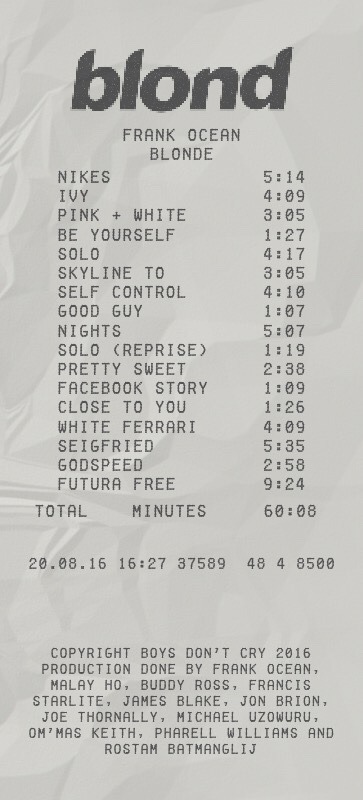Queen Shit




Queen shit
More Posts from Basicrefluxsblog and Others




Ziad Nakad | Fall/Winter 2017 Couture











Flora and Sylva
These vibrant botanical illustrations are hand-colored lithographs from volume 4 of Asa Strong’s 4-volume work The American Flora, published in New York by Green & Spencer between 1850 and 1853, with illustrations by Edwin Whitefield. The set, part of the donation of important botanical and horticultural books from Lynde Bradley Uihlein, includes nearly 200 hand-colored lithographic plates with extensive taxonomic descriptions for the propagation, culture, and medical use of 444 plants.
View more posts from this set.
View other posts from the Uihlein donation.
View more posts from our Flora and Sylva series.







Timothée Chalamet for Dazed China — March 2020

The Tadpoles of IC 410 via NASA https://ift.tt/2AN24HZ
This telescopic close-up shows off the central regions of otherwise faint emission nebula IC 410, captured under backyard suburban skies with narrowband filters. It also features two remarkable inhabitants of the cosmic pond of gas and dust. Below and right of center are the tadpoles of IC 410. Partly obscured by foreground dust, the nebula itself surrounds NGC 1893, a young galactic cluster of stars. Formed in the interstellar cloud a mere 4 million years ago, the intensely hot, bright cluster stars energize the glowing gas. Composed of denser cooler gas and dust, the tadpoles are around 10 light-years long and are likely sites of ongoing star formation. Sculpted by stellar winds and radiation their heads are outlined by bright ridges of ionized gas while their tails trail away from the cluster’s central young stars. IC 410 lies some 10,000 light-years away, toward the nebula-rich constellation Auriga.
(Published June 18, 2020)





Ralph & Russo | Fall/Winter 2019 Couture


Adriana Lima for Trace Magazine, shot by Patrick Ibañez




Close-Up of the Helix Nebula
This cropped version of the Helix Nebula mosaic shows cometary-filaments embedded along a portion of the inner rim of the nebula’s red and blue gas ring. At a distance of 650 light-years, the Helix is one of the nearest planetary nebulae to Earth.
Credit: NASA, NOAO, ESA, the Hubble Helix Nebula Team, M. Meixner (STScI), and T.A. Rector (NRAO).

Blonde inspired Receipt 🧾
@simsdows
-
 ysf2004tmj liked this · 4 months ago
ysf2004tmj liked this · 4 months ago -
 hisuikafka liked this · 2 years ago
hisuikafka liked this · 2 years ago -
 themysteriousvanishingofelectra liked this · 3 years ago
themysteriousvanishingofelectra liked this · 3 years ago -
 dayn1sh liked this · 3 years ago
dayn1sh liked this · 3 years ago -
 walkinchickpea liked this · 3 years ago
walkinchickpea liked this · 3 years ago -
 aok-okay liked this · 3 years ago
aok-okay liked this · 3 years ago -
 regul4rsun reblogged this · 3 years ago
regul4rsun reblogged this · 3 years ago -
 icarusjumpsuitisonfire reblogged this · 4 years ago
icarusjumpsuitisonfire reblogged this · 4 years ago -
 dxmain reblogged this · 4 years ago
dxmain reblogged this · 4 years ago -
 wowthisisreallynice reblogged this · 4 years ago
wowthisisreallynice reblogged this · 4 years ago -
 swagweedyolo420 reblogged this · 4 years ago
swagweedyolo420 reblogged this · 4 years ago -
 cooltumblaccounts liked this · 4 years ago
cooltumblaccounts liked this · 4 years ago -
 vaguecaninething reblogged this · 4 years ago
vaguecaninething reblogged this · 4 years ago -
 houshako liked this · 4 years ago
houshako liked this · 4 years ago -
 mastajeto reblogged this · 4 years ago
mastajeto reblogged this · 4 years ago -
 wormcat32 liked this · 4 years ago
wormcat32 liked this · 4 years ago -
 joancasaramona liked this · 4 years ago
joancasaramona liked this · 4 years ago -
 shunplikes reblogged this · 4 years ago
shunplikes reblogged this · 4 years ago -
 nohovictor reblogged this · 4 years ago
nohovictor reblogged this · 4 years ago -
 itsprobablybetteroffthatway reblogged this · 4 years ago
itsprobablybetteroffthatway reblogged this · 4 years ago -
 fangirl4lifetime liked this · 4 years ago
fangirl4lifetime liked this · 4 years ago -
 jadepaintedwings reblogged this · 4 years ago
jadepaintedwings reblogged this · 4 years ago -
 0visualsystem0 reblogged this · 4 years ago
0visualsystem0 reblogged this · 4 years ago -
 0visualsystem0 liked this · 4 years ago
0visualsystem0 liked this · 4 years ago -
 mossysloth reblogged this · 4 years ago
mossysloth reblogged this · 4 years ago -
 flayrah reblogged this · 4 years ago
flayrah reblogged this · 4 years ago -
 astrangeevent2002 liked this · 4 years ago
astrangeevent2002 liked this · 4 years ago -
 fizzybee liked this · 4 years ago
fizzybee liked this · 4 years ago -
 ploombikaz liked this · 5 years ago
ploombikaz liked this · 5 years ago -
 xskimx reblogged this · 5 years ago
xskimx reblogged this · 5 years ago -
 hexalt reblogged this · 5 years ago
hexalt reblogged this · 5 years ago -
 hexalt liked this · 5 years ago
hexalt liked this · 5 years ago -
 isaleenders liked this · 5 years ago
isaleenders liked this · 5 years ago -
 moonfirebrides liked this · 5 years ago
moonfirebrides liked this · 5 years ago -
 magic-dream-child reblogged this · 5 years ago
magic-dream-child reblogged this · 5 years ago -
 dianadoppelganger liked this · 5 years ago
dianadoppelganger liked this · 5 years ago -
 yurisolde liked this · 5 years ago
yurisolde liked this · 5 years ago -
 f0xgl0ves liked this · 5 years ago
f0xgl0ves liked this · 5 years ago -
 colorfuldimentions reblogged this · 5 years ago
colorfuldimentions reblogged this · 5 years ago
